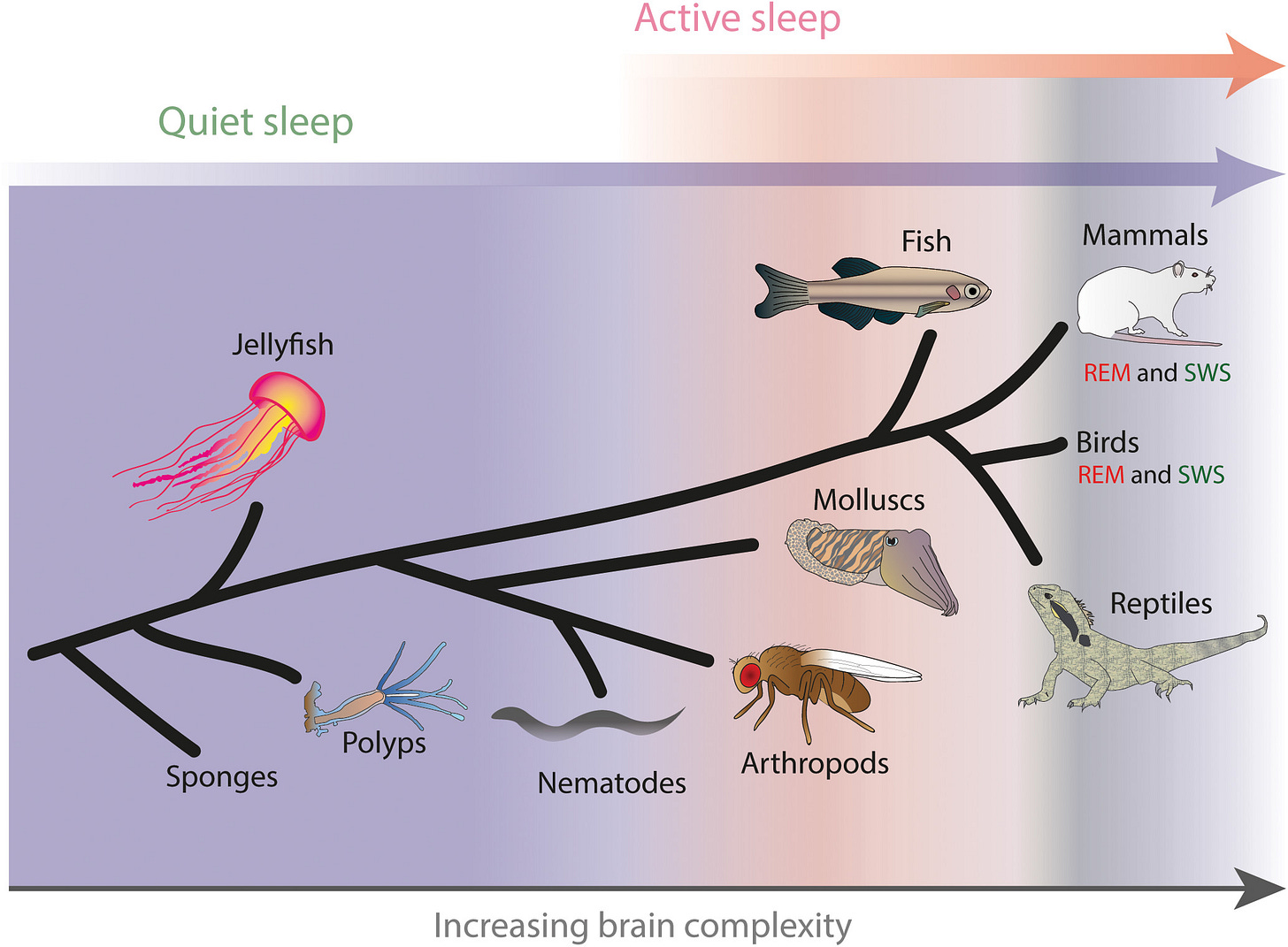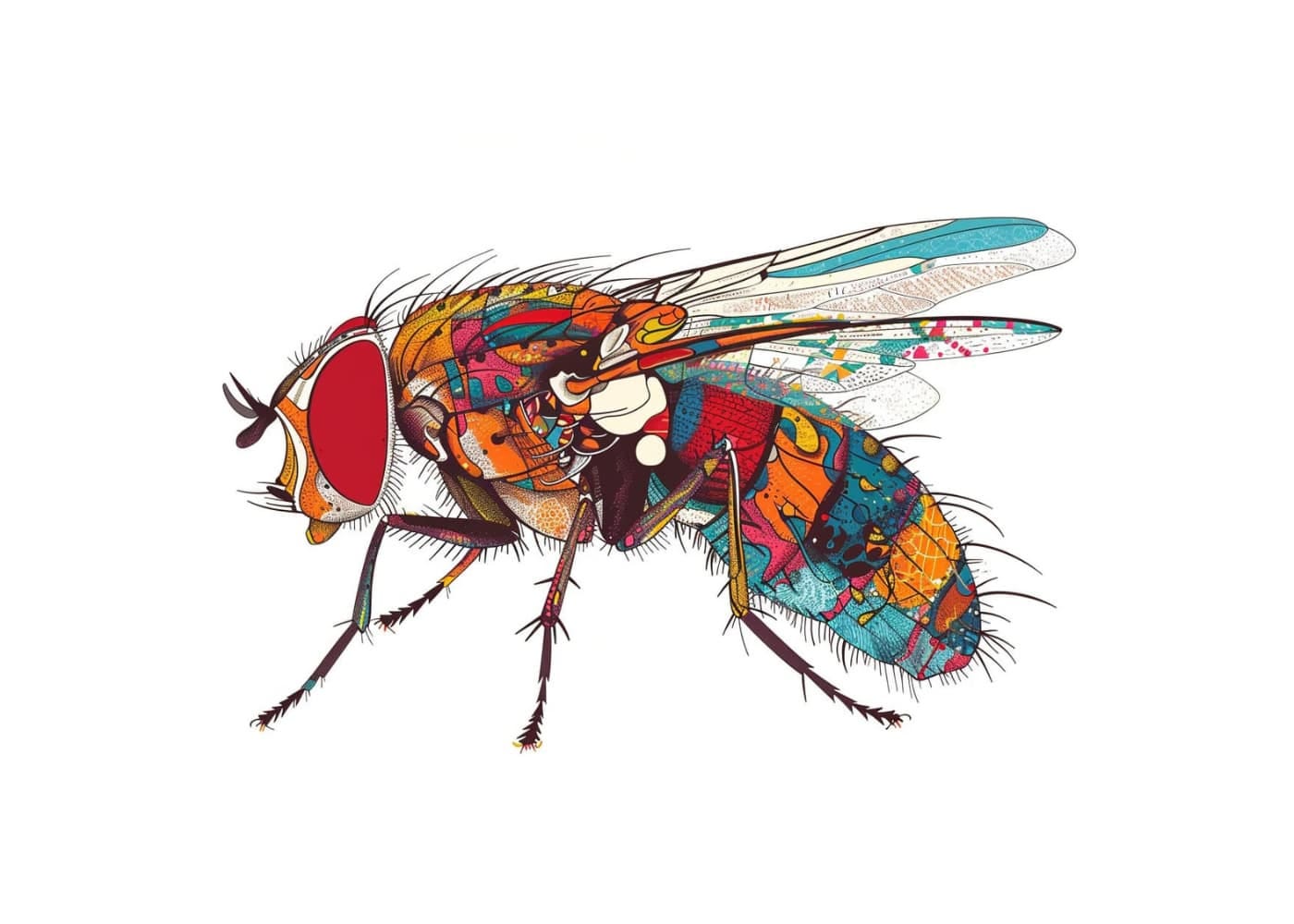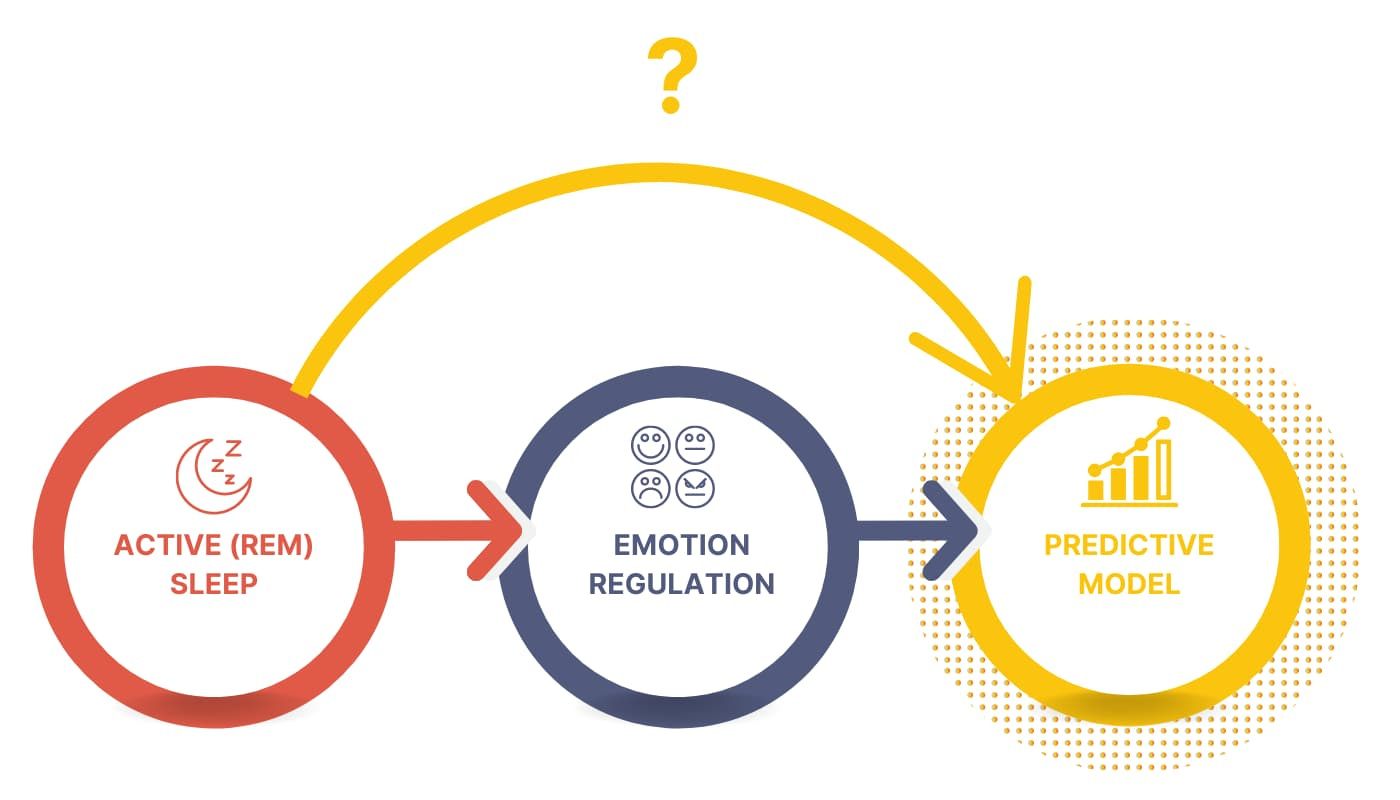Do you have a furry roommate with adorable puppy eyes?
If the answer is yes, I’m a little jealous. But I’m also curious — have you ever noticed your tail-wagging best friend sleeping while twitching or kicking their legs as if running?
To any dog owner, it seems obvious they dream. We try to imagine what the dog might dream about—chasing balls, playing at the park, or eating something yummy.
But is your dog really dreaming?
To you, it may seem self-evident that your canine companion dreams, but to others, those twitching legs and muffled barks are simply involuntary muscle spasms occurring during certain sleep stages. Because of this, questions like — do animals dream? so often results in an impasse.
To avoid this potential stalemate, let’s be clear about what question we are trying to answer. It’s tempting to conflate questions like, do animals dream? with other closely related questions, like what do animals dream about? To help sidestep this issue, let’s break this week’s main question into three parts:
Which animals show the physical signs of dreaming?
Why would animals need to dream?
What might dreams feel like to an animal?
1. Which animals show the physical signs of dreaming?
When it comes to researching dreaming in other species, scientists face a significant hurdle—how do we measure dreams? How do we observe something as subjective and internal as dreaming in animals that can’t tell us about their dreams?
In human research, a major breakthrough in measuring dreams came approximately a century ago when sleep researchers first identified a distinct stage of sleep—rapid eye movement (REM).
The interesting thing about REM sleep is that our brain’s electrical activity during REM sleep (low-amplitude, desynchronized neural activity) resembles the patterns observed when we are awake. For this reason, the REM sleep stage is also called active sleep (I will use these terms interchangeably in this article). It differs from quiet sleep (or non-REM) stages, which are associated with a lack of movements and high-amplitude slow wave patterns.
The other interesting thing about the REM stage is that it is strongly linked to dreaming. We do dream in other stages of sleep, too, but if you wake someone up during REM sleep, they usually report having vivid dreams about emotional events. Dreams during non-REM sleep are not as vivid or emotional. Non-REM ‘dreams’ are better described as mundane thoughts — they lack the vivid and memorable content of REM dreaming.
Quiet and active sleep in animals
Since REM sleep is closely associated with dreaming in humans, it is natural to wonder whether we see evidence of similar active sleep states in other animals.
Almost every animal sleeps. Even animals without brains, like jellyfish, occasionally become motionless. This non-active sleep is thought to be necessary for essential biological processes such as cell repair, growth, development, metabolism, and stress reduction.
Even though almost every animal sleeps, not all animals engage in active sleep. But many do. It is well-documented that most mammals engage in active sleep. Birds too. But it turns out even animals very different from humans, including reptiles, fish, molluscs, and even fruit flies, engage in active sleep. Below, in Figure 1, we see the possible evolution of active sleep in mammals and birds, which shows that while all animals engage in quiet sleep (purple line), not all animals engage in active sleep (orange line).

2. Why would animals need active sleep?
This makes us wonder — why? Why would a fruit fly need active sleep? What function does it provide?
Before we try to answer this question, we might want to ask a related question:
Why do we need to sleep at all?
Scientists believe moments of inactivity are important for homeostasis — sleep is when our cells repair, we grow and develop, we clear out waste and regulate our body’s stress.
In light of the need for rest and restoration, non-active sleep makes some sense. But it’s difficult to understand why an animal might need active sleep. Why have the brain activity of being awake while being completely detached from the world?
Any time spent sleeping would put an animal in a highly dangerous condition — a condition that makes the animal an easy meal for a potential predator. So, why would animals spend more time sleeping than is necessary for basic rest and restoration? Evolutionarily, we might expect active sleep to provide an enormous advantage to offset this huge disadvantage. But what could that advantage be?
Emotion regulation?
One of the more popular theories about why we need active sleep is that it is important for emotion regulation. There is ample evidence that people who don’t get enough REM sleep are not as good at processing and regulating emotions as those who do.
For example, in one study, two groups of people were shown many images. Some of those images were a bit distressing (i.e. they made people feel negative emotions), and other images were neutral. When the participants slept that night, one group was allowed to sleep normally, but the other group was deprived of any REM sleep.
The next day, the two groups were shown more images. Half of the images were images shown the day before, and half were new images.
The participants' task was to identify which images they had seen before and which were new. Both groups performed equally well for the neutral images. However, for the images that evoked negative emotions, the group that was deprived of REM sleep performed worse than the normal sleep group. The findings of this study (and those like it) suggest an important role for active sleep in emotion processing.
In animals, some of the most captivating evidence for emotional processing during active sleep comes from octopuses and cuttlefish. These marine creatures are known for their ability to change colour, especially during experiences that involve an emotional state. Remarkably, researchers have observed octopuses and cuttlefish exhibiting these same spontaneous colour and texture changes during periods of active sleep.
I highly recommend taking one and a half minutes to watch this clip of an octopus changing colour while sleeping from Nature on PBS.
Why is emotion regulation important?
There is a lot of evidence to suggest active sleep is associated with emotion regulation. The next question is why? Is emotion regulation so important it outweighs the increased risk of being someone’s lunch?
On first impressions, emotions don’t seem important. But, it turns out, emotions have a very important purpose.
Take some time to think about the last time you felt emotional, for example, joy, sadness, anger, pride, or gratitude. If I were to guess, I’d predict the event that caused this emotion was also (at least a bit) surprising. Emotions tend to be heightened when we are surprised — when our initial predictions are wrong. The more surprising an event, the stronger the emotional response.
Imagine for a moment you are a diehard sports fan. Your team, however, is currently at the bottom of the ladder. This weekend, your team will go head-to-head with the team currently at the top of the ladder. If your team loses this game, they are out of the competition. Considering your team’s poor performance so far this season, you reasonably predict your team will not win this game.
Now, let’s consider two scenarios.
Consider how you would feel if you were wrong and your team did win the game. The euphoria and elation would be intense. Now, consider a fan of the opposing team. They have a reasonable prediction their team will win. How would they feel if their team won the game? Probably not as excited as you would feel if your team won, right?
What do feelings about winning a sports game have to do with dreams?
While predicting the outcome of sports games might seem trivial, making accurate predictions about events in our world is extremely important for survival. If something unexpected occurs that violates our predictions about reality, it would be hugely advantageous to remember both the surprising event and the circumstances that led to it. Imagine that an octopus ventures into new territory, expecting to find small fish to eat. But instead, the octopus narrowly escapes an attack by a sea lion. It would be extremely advantageous if the octopus remembered this shocking event and the events that led to it.
To summarise, so far:
We have evidence that suggests active sleep plays a role in emotion regulation.
We also have evidence that suggests emotion regulation plays a role in updating our predictive model of the world.
The question is — could this mean active sleep plays a role in updating our predictive models of the world?
A group of neuroscientists who study sleep in animals proposes this exact idea. These researchers not only suggest that active sleep is widespread in animals but also suggest that the purpose of active sleep is to optimise the animals' ability to accurately predict their world. This ability to accurately predict the world is especially important for animals that move and confront constantly changing environments.
Dreaming might simply be our brain’s way of simulating possible scenarios during active sleep. Just like the virtual reality simulation we find in a first-person video game, dreams allow us to try out potential responses to new environments or situations. We can then use the consequence of these responses to update our predictions about what might happen — all within the relative safety of a simulated environment that doesn’t contain real hazards and dangers.
This gives dreaming a clear adaptive value. Updating our predictive models without needing trial-and-error learning is a major evolutionary advantage. Learning to better predict our world with fewer real-life dangers could outweigh the costs of being detached from the world during sleep.
3. What might dreams feel like to an animal?
We may never know exactly what specific scenarios a fruit fly dreams about, but we know fruit flies need to make predictions about what happens next. If the researchers are correct, and dreaming is about providing an animal with a simulated environment to refine their predictive models of the world, we might expect there is some experiential aspect to this simulation.
If active sleep is really an animal's brain generating a simulation, are these simulations not a type of conscious experience?
We might wonder about the richness of these simulations. Does a dreaming octopus re-experience hunting for a specific fish in a specific situation? Or is the simulation more simple than that? Perhaps an octopus’s dream is more about updating general sensory predictions and actions involved when pursuing prey, avoiding predators, and exploring new environments than it is about specific detailed situations.
The richness of the ‘dream’ simulation likely depends on the complexity of the animal's predictive modelling capabilities. That is, the complexity of the dream will depend on the complexity of the brain. For a simple animal like a fruit fly, dreams may be very basic simulations compared to the complexity of human dreaming.
As with all research investigating non-human behaviour, we must be careful not to have an overly anthropomorphic view of animals that projects human qualities onto animals. Just because there seems to be an association between active sleep and predictive updating in humans doesn’t mean the same exists in non-human animals. But at the same time, we need to be careful not to make the opposite mistake of an overly anthropocentric view that only considers human experience as relevant.
There is still much more research needed to test and validate the hypothesis that dreaming is the brain’s way of updating its predictive models. So, we need to be careful not to make strong claims at this early stage.
But with that caveat in mind, if the idea turns out to be correct, it may shift the way we think about not just animal dreaming but also consciousness itself. Investigating which animals have active sleep and which don’t might provide insights into understanding how consciousness is built — which is also a popular question among many of us interested in artificial intelligence.
Rather than asking questions like — what do animals dream about? the more relevant question may be — is there anything it feels like to make a prediction?
Thanks so much for reading this article.
I want to take a small moment to thank the lovely folks who have reached out to say hello and joined the conversation here on Substack.
If you'd like to do that, too, you can leave a comment, email me, or send me a direct message. I’d love to hear from you. If reaching out is not your thing, I completely understand. Of course, liking the article and subscribing to the newsletter also help the newsletter grow.
If you would like to support my work in more tangible ways, you do that in two ways:
You can become a paid subscriber
or you can support my coffee addiction through the “buy me a coffee” platform.
I want to personally thank those of you who have decided to financially support my work. Your support means the world to me. It's supporters like you who make my work possible. So thank you.







I think animal research is a very underrated field in its ability to provide insights beyond closely related research fields. I was reading about how some researchers even built a fly to understand more about the flight of these animals. The connection with different scientific fields is broad, and I think it can be an inspiration for numerous authors and researchers. Thanks for sharing!
That's a fascinating topic, and I must admit I haven't given much thought as to which animals dream and for what reasons. Thanks for sharing the studies and current assumptions.
That octopus video is incredible!
But I wonder if octopuses are like us, so when one wakes up from a dream, it hurries off to its friends to tell them all about it, but by the time it gets there it can only sort of barely do just one vague color and the friends are like "Cool story, dude," and simply move on with their lives. Someone should research THAT!